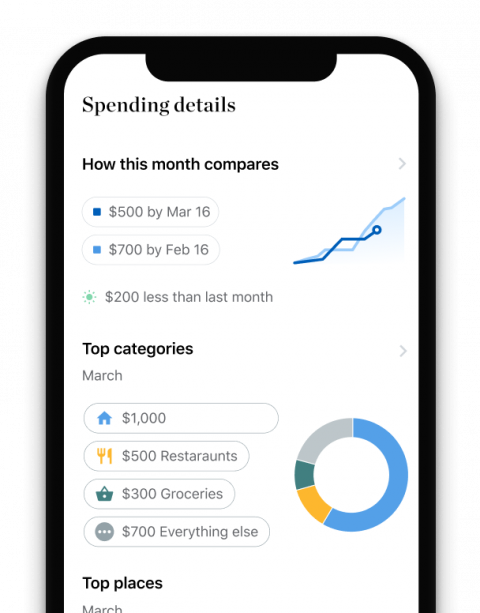Income-Driven Repayment: Is It Right for You?

Many or all of the products featured here are from our partners who compensate us. This influences which products we write about and where and how the product appears on a page. However, this does not influence our evaluations. Our opinions are our own. Here is a list of our partners and here's how we make money.
Find the latest
Manage monthly bills: Consider the new SAVE repayment plan
Punting payments for a year? Why you should think twice
Get your loans out of default: Sign up for the Fresh Start program
Student loan scams on the rise: How to protect yourself
The federal government offers four income-driven repayment, or IDR, plans that can lower your monthly bills based on your income and family size. Payments could even be $0 if you're unemployed or earn less than 150% or 225% of the poverty threshold, depending on the plan you choose.
Switching to one of these plans is usually right for you in the following instances:
You can’t afford your current payments and want to avoid late payments and student loan default.
You’ll qualify for Public Service Loan Forgiveness.
You have high student loan debt and a low income or are unemployed.
Here’s what to know about the different income-driven plans before you sign up.
Which income-driven repayment plan is best for you?
All income-driven repayment plans share some similarities: Each caps payments to between 5% and 20% of your discretionary income and forgives your remaining loan balance after 10 to 25 years of payments. The four plans are:
Saving on a Valuable Education (SAVE), which replaced the REPAYE plan.
The least confusing way to select a plan is to let your servicer place you on the one you qualify for that has the lowest monthly payment. You can choose this option when you complete the income-driven repayment plan application.
Payments under every income-driven plan count toward Public Service Loan Forgiveness, which can forgive your remaining student loan debt after 10 years in an eligible public service job. If you’ll qualify for this program, choosing the plan that offers you the smallest payment is likely your best bet.
Before enrolling in any income-driven plan, plug your loan information into Federal Student Aid’s Loan Simulator. This will give a good idea of your monthly bills, overall costs and forgiveness amounts under each plan.
What about the new IDR plan?
There's a new IDR plan, SAVE, which has replaced the formerly available REPAYE plan. Highlights of the plan include:
Borrowers earning less than about $32,800 individually, or less than $67,500 for a family of four, can get $0 monthly bills.
Those with undergraduate loans will see payments decreased from 10% of discretionary income to 5% starting July 2024.
Students who borrow $12,000 or less can see their remaining balances wiped away after 10 years of payments, instead of 20 to 25 years.
If you were enrolled in REPAYE, you were automatically moved over to SAVE. You'll need to apply if you are on another IDR plan and want to sign up for SAVE. Applications may take about four weeks to process.
You must recertify your income and family size every year
To keep your income-driven repayment status you must recertify income-based repayment every year by providing income and family size information, unless you gave consent during the application process for your tax information to be accessed. If so, your recertification will automatically renew. You will receive notice before a new payment amount goes into effect.
If your income changes, your payments will change, too. If you miss the recertification deadline, you’ll have to pay more — likely the standard repayment plan amount — until you re-enroll. Any interest will typically be capitalized, or added to your principal balance, at that point.
The earliest you could be required to update your income and family size is September 2024, ahead of a Nov. 1, 2024 deadline. Previously, the Education Department had set a March 2024 deadline.
Servicers will alert you three months before your recertification deadline. Your income information is due 35 days before the deadline.
Income-driven repayment disadvantages
While income-driven repayment options can make monthly student loan payments more affordable, these programs do have some potential disadvantages.
IDR waiver will count past payments toward forgiveness
Millions of borrowers are expected to benefit from a one-time IDR account adjustment, or waiver, that will count past payments toward the 240 or 300 needed for IDR forgiveness. The adjustment is underway and will continue through 2024.
The account adjustment will be automatic for most, and deferment and forbearance periods will count toward IDR forgiveness. Millions of longtime borrowers could receive loan forgiveness, and millions more are expected to receive at least three years of additional credit toward IDR forgiveness.
How to apply for income-driven repayment
You can apply for income-driven repayment at studentaid.gov or by contacting your federal student loan servicer and sending them a paper request form. You can change your student loan repayment plan at any time.
To complete the application, you will need to provide information about your family size and your most recent federal income tax return or transcript. If you didn’t file taxes, you’ll need to submit alternate proof of any taxable income you’ve earned within the past 90 days, such as:
Pay stubs.
A letter from your employer listing your gross pay.
A signed statement explaining your income, if formal documentation is unavailable.
Your servicer can put your loans in a temporary forbearance while processing your application. You aren’t required to make payments during forbearance, but interest will accrue on your loan. This increases the amount you owe.
Can’t afford income-driven repayment?
Factors besides your income can affect how income-driven payments are calculated. If your payments end up being too high, the federal government offers extended repayment and graduated repayment plans, which lower your payments but aren’t based on your income. You may pay more interest under these plans, though, and neither offers loan forgiveness.
Refinancing your student loans with a private lender could also reduce your monthly payments, depending on the new loan’s terms. But refinancing federal student loans can be risky, as you’ll lose access to programs like income-driven repayment and loan forgiveness. Be sure you’re comfortable giving up those options before refinancing.


